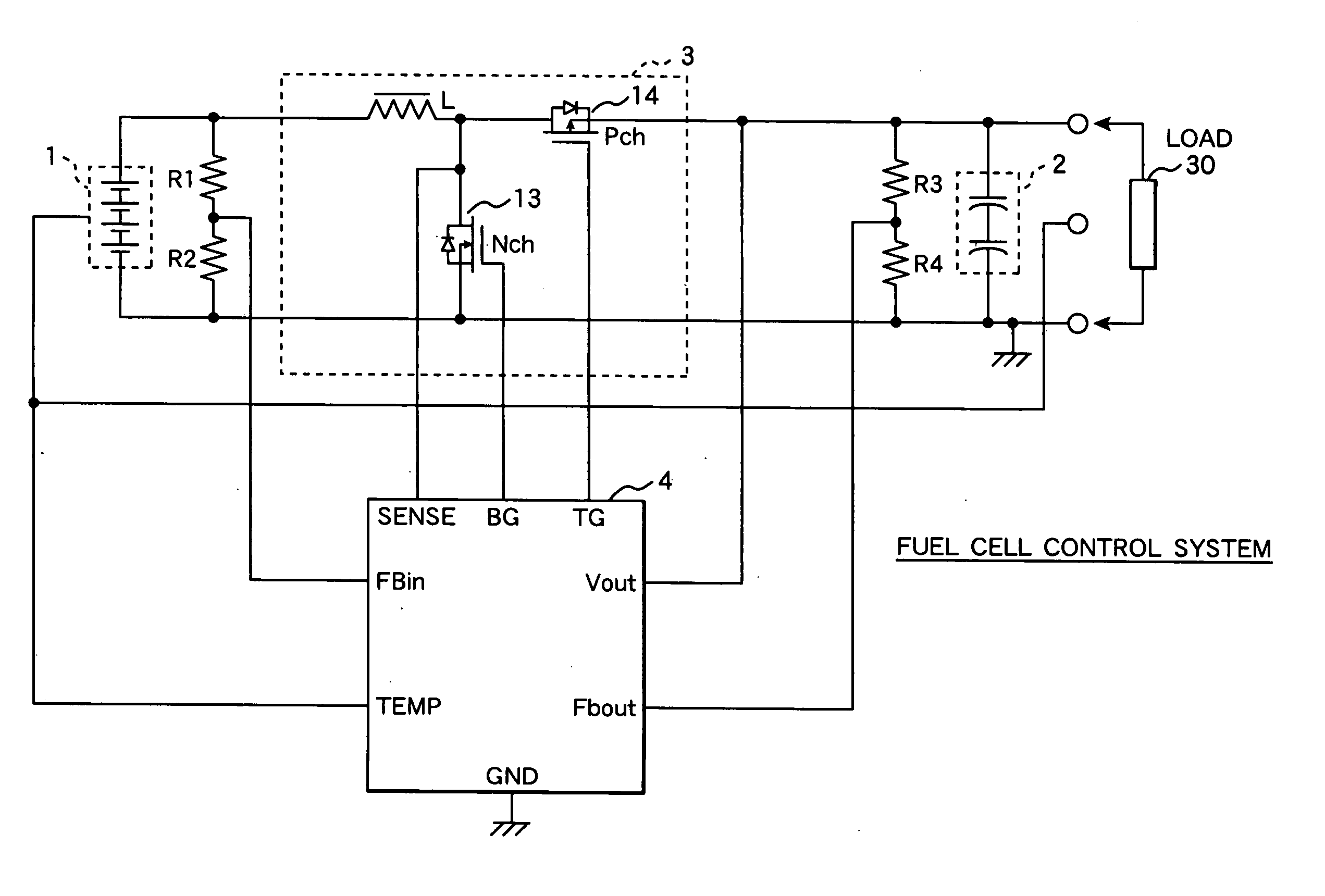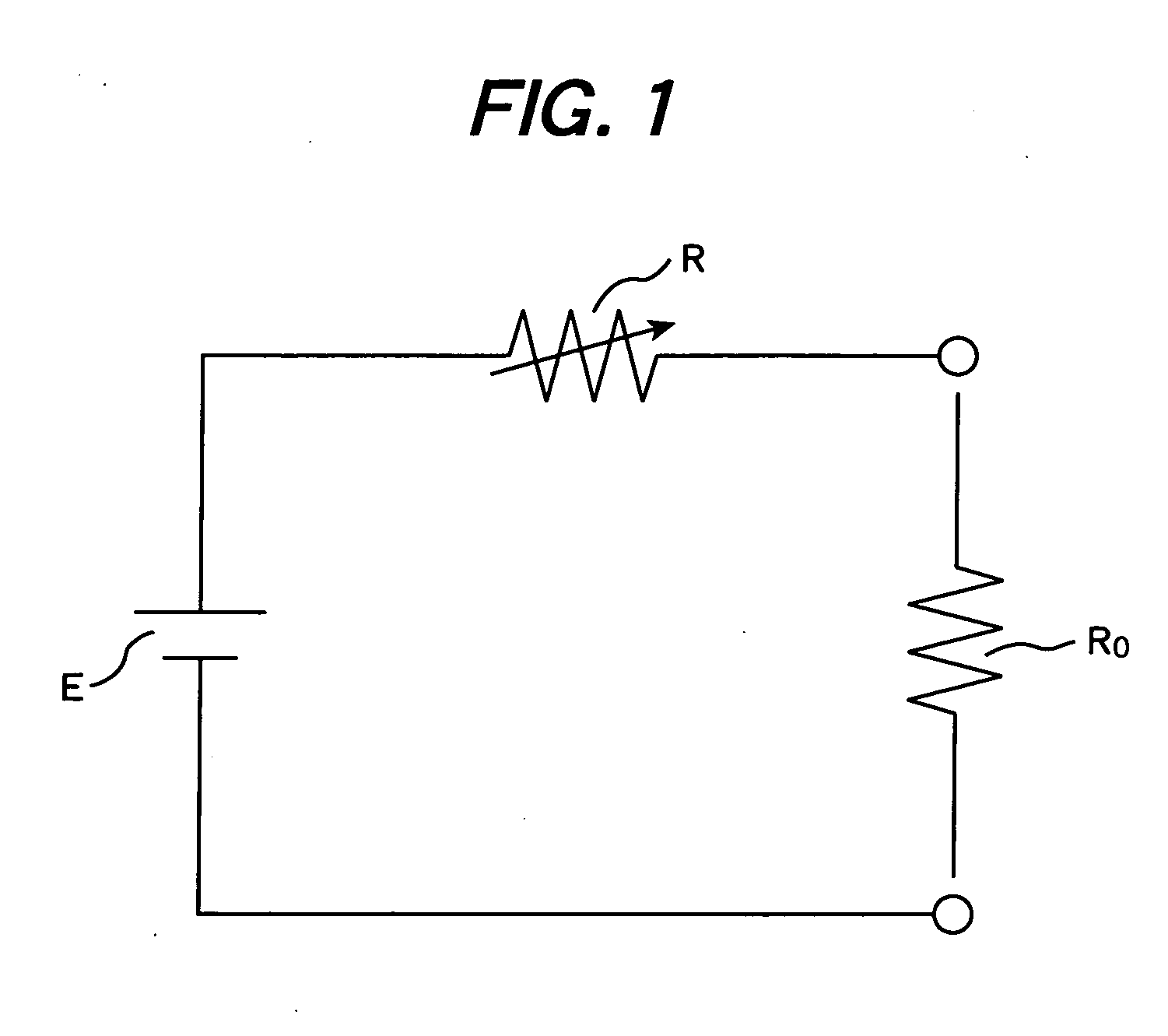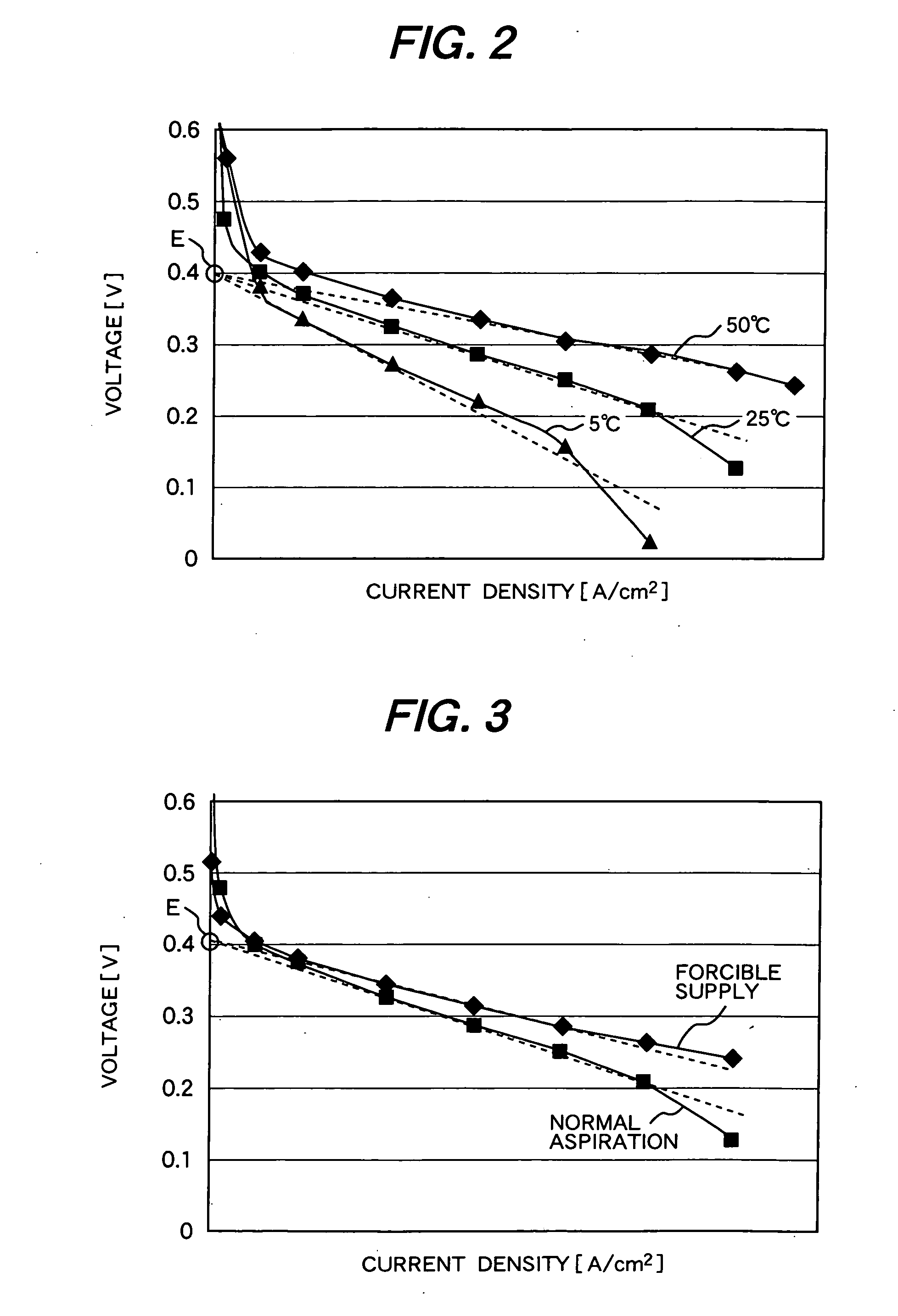Mehotd for determining a maximum power point voltage of a fuel cell, as well as fuel cell control system and power controller used in the fuel cell control system
a technology of power point voltage and fuel cell, which is applied in the direction of process and machine control, electrochemical generators, instruments, etc., can solve the problem of inability of fuel cells to generate high-output power, and achieve the effect of reducing the output power of fuel cells
- Summary
- Abstract
- Description
- Claims
- Application Information
AI Technical Summary
Benefits of technology
Problems solved by technology
Method used
Image
Examples
first embodiment
[0051]FIG. 4 shows an exemplary structure of a fuel cell control system according to a first embodiment of the present invention. The fuel cell control system mainly comprises a fuel cell 1, an electric double layer capacitor (EDLC) 2, which is a storage means, a circuit section 3, which is a step-up or step-down converter, and a control IC chip (power controller) 4 that performs switching control for the circuit section 3. The fuel cell control system is used in a mobile electronic apparatus. The fuel cell 1 is a direct methanol fuel cell.
[0052] In the fuel cell control system, the dielectric strength of the electric double layer capacitor 2 used as the storage means is 2.3 V to 3.3 V per cell. When two cells are connected in series as shown in FIG. 4, the dielectric strength is 4.6 V or higher, so the electric double layer capacitor 2 can be used in mobile telephones, personal digital assistants (PDAs), digital still cameras, multi-media players, and other electronic apparatus th...
second embodiment
[0082]FIG. 8 shows the structure of a fuel cell control system according to a second embodiment of the present invention. The fuel cell control system uses a control IC chip 4a, the internal structure of which differs from that of the IC chip 4 in the fuel cell control system according to the first embodiment shown in FIG. 6. The structures of the circuit section 3a and other parts are the same as in the fuel cell control system shown in FIG. 6.
[0083] The control IC chip 4a comprises a control section 11a and reference voltage setting section 12. The output voltage of the circuit section 3a is divided by the resistor R3 and resistor R4, input to the stored voltage terminal Fbout, and then compared with the second reference voltage Vref2 by the differential amplifier S3. The differential voltage (referred to below as the output voltage difference) is output to a terminal of the reference voltage setting section 12. The temperature voltage of the fuel cell 1 is input from the tempera...
third embodiment
[0092]FIG. 10 shows the structure of a fuel cell control system according to a third embodiment of the present invention. The fuel cell control system according to the third embodiment shown in FIG. 10 differs from the fuel cell control systems according to the first and second embodiments in that the circuit section 3b is a step-up chopper circuit using a Schottky barrier diode 15 rather than being of the synchronous rectification type. Specifically, in the circuit section 3b in FIG. 10, the Schottky barrier diode 15 is substituted by the P-channel power MOSFET 14 in the circuit section 3a in FIG. 6. This structure is more useful for increasing the voltage at the output end than the structure according to the first embodiment in FIG. 6 and the structure according to the second embodiment in FIG. 8.
[0093] The control IC chip 4b according to the third embodiment shown in FIG. 10 will be described in detail. Unlike the control IC chip 4 according to the first embodiment shown in FIGS...
PUM
| Property | Measurement | Unit |
|---|---|---|
| open circuit-voltage | aaaaa | aaaaa |
| current-voltage characteristic | aaaaa | aaaaa |
| voltage | aaaaa | aaaaa |
Abstract
Description
Claims
Application Information
 Login to View More
Login to View More - R&D
- Intellectual Property
- Life Sciences
- Materials
- Tech Scout
- Unparalleled Data Quality
- Higher Quality Content
- 60% Fewer Hallucinations
Browse by: Latest US Patents, China's latest patents, Technical Efficacy Thesaurus, Application Domain, Technology Topic, Popular Technical Reports.
© 2025 PatSnap. All rights reserved.Legal|Privacy policy|Modern Slavery Act Transparency Statement|Sitemap|About US| Contact US: help@patsnap.com



